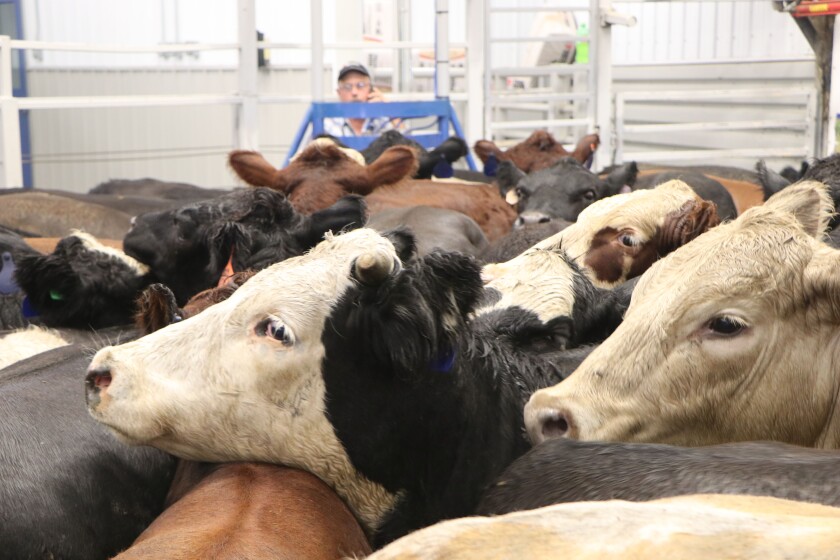Safeguarding Success: Bagley Risk Management Services
Safeguarding Success: Bagley Risk Management Services
Blog Article
Recognizing Livestock Risk Security (LRP) Insurance: A Comprehensive Guide
Navigating the world of livestock threat protection (LRP) insurance coverage can be a complex undertaking for numerous in the farming sector. This kind of insurance supplies a safeguard versus market variations and unpredicted circumstances that could impact animals manufacturers. By comprehending the intricacies of LRP insurance policy, manufacturers can make educated choices that might guard their procedures from economic dangers. From exactly how LRP insurance works to the numerous insurance coverage options offered, there is much to discover in this thorough overview that can potentially shape the way livestock producers approach threat management in their businesses.

Just How LRP Insurance Coverage Functions
Periodically, comprehending the technicians of Livestock Risk Security (LRP) insurance coverage can be complicated, yet breaking down exactly how it functions can provide clarity for ranchers and farmers. LRP insurance is a threat monitoring tool designed to secure animals producers against unforeseen cost declines. The policy allows producers to set a coverage level based on their particular demands, choosing the variety of head, weight range, and insurance coverage cost. Once the plan is in location, if market value fall listed below the insurance coverage rate, manufacturers can sue for the difference. It is very important to note that LRP insurance policy is not an earnings assurance; rather, it focuses only on price threat security. The protection period generally varies from 13 to 52 weeks, giving flexibility for producers to pick a period that aligns with their production cycle. By using LRP insurance, farmers and breeders can minimize the economic risks connected with changing market value, guaranteeing higher security in their procedures.
Qualification and Insurance Coverage Options

When it comes to protection choices, LRP insurance supplies manufacturers the adaptability to select the protection level, protection period, and recommendations that finest suit their threat management requirements. By understanding the qualification criteria and protection options available, livestock manufacturers can make informed choices to take care of danger properly.
Pros and Disadvantages of LRP Insurance Policy
When reviewing Animals Danger Security (LRP) insurance, it is essential for animals manufacturers to evaluate the advantages and negative aspects intrinsic in this risk administration tool.

One of the key benefits of LRP insurance is its capability to offer protection versus a decrease in livestock costs. This can help secure manufacturers from monetary losses resulting from market variations. Furthermore, LRP insurance uses a degree of versatility, permitting producers to customize protection levels and policy durations to fit their details needs. By locking in an ensured rate for their livestock, producers can better handle threat and strategy for the resource future.
One constraint of LRP insurance coverage is that it does not protect versus all types of risks, such as illness break outs or natural calamities. It is essential for producers to thoroughly examine their private danger direct exposure and economic circumstance to determine if LRP insurance coverage is the best danger administration tool for their operation.
Comprehending LRP Insurance Premiums

Tips for Maximizing LRP Perks
Making the most of the benefits of Animals Risk Security (LRP) insurance policy requires tactical planning and aggressive threat management - Bagley Risk Management. To take advantage of your LRP insurance coverage, consider the following suggestions:
Routinely Examine Market Problems: Stay notified about market patterns and cost variations in the livestock market. By keeping track of these aspects, you can make enlightened decisions regarding when to acquire LRP protection to shield against potential losses.
Set Realistic Coverage Levels: When selecting coverage degrees, consider your manufacturing prices, market price of animals, and prospective dangers - Bagley Risk Management. Setting sensible protection levels guarantees that you are adequately protected without overpaying for unneeded insurance policy
Diversify Your Protection: As opposed to depending entirely on LRP insurance, think about diversifying your danger monitoring strategies. Incorporating LRP with various other risk management devices such as futures agreements or choices can provide comprehensive insurance coverage versus market uncertainties.
Review and Readjust Protection Regularly: As market problems alter, regularly examine your LRP protection to ensure it lines up with your present risk direct exposure. Readjusting coverage degrees and timing of purchases can help optimize your danger protection approach. By complying with these tips, you can maximize the advantages of LRP insurance policy and secure your livestock procedure against unpredicted risks.
Verdict
Finally, livestock threat protection (LRP) insurance is an important tool for farmers to take care of the economic Learn More risks linked with their livestock procedures. Your Domain Name By understanding just how LRP functions, qualification and protection choices, as well as the pros and cons of this insurance, farmers can make enlightened choices to protect their source of incomes. By carefully taking into consideration LRP premiums and executing approaches to make best use of benefits, farmers can reduce possible losses and make certain the sustainability of their operations.
Livestock producers interested in acquiring Animals Threat Protection (LRP) insurance coverage can check out an array of qualification requirements and insurance coverage options tailored to their specific livestock operations.When it comes to protection choices, LRP insurance coverage uses manufacturers the versatility to select the protection degree, protection period, and endorsements that finest match their threat management requirements.To realize the complexities of Animals Threat Security (LRP) insurance policy fully, comprehending the aspects affecting LRP insurance policy costs is crucial. LRP insurance coverage premiums are determined by various elements, including the protection level chosen, the expected cost of livestock at the end of the coverage duration, the type of livestock being guaranteed, and the size of the coverage period.Testimonial and Readjust Protection Consistently: As market problems alter, periodically evaluate your LRP coverage to guarantee it straightens with your existing threat direct exposure.
Report this page